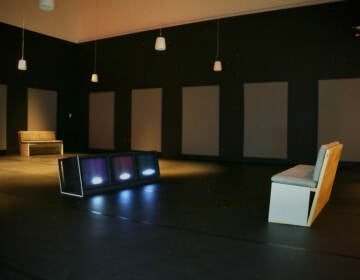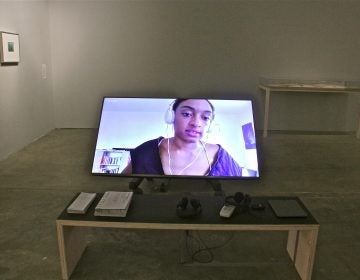The heart of the matter: Drummer Milford Graves exhibit on the science of heartbeats
The ICA in Philadelphia opens an exhibition of jazz drummer Milford Graves and his lifelong research into the power of heartbeats.
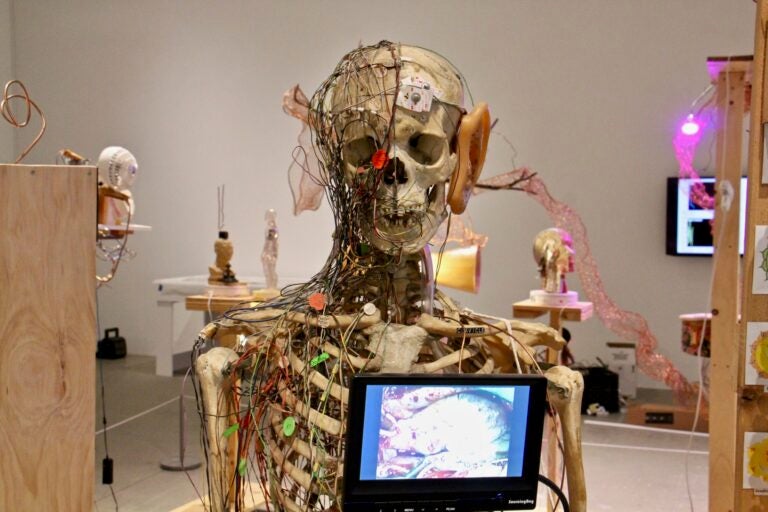
While his own heart is failing, Milford Graves explores in sculpture the connections between the rhythm of music and the beating heart. (Emma Lee/WHYY)
While it may seem unusual that the Institute of Contemporary Art at the University of Pennsylvania should give all of its gallery rooms to an exhibit about a musician, the life and mind of drummer Milford Graves more than fills them.
One of the rooms is crammed with sculptures made of plywood that look scientific, flickering computer screens, anatomical skeletons, and African drums. Another features Graves’ hand-painted drum kit and African-inspired garb he designed and wore for performances. Yet another is filled with video monitors running loops of footage showing Graves practicing Yara, a martial arts practice of his own invention.
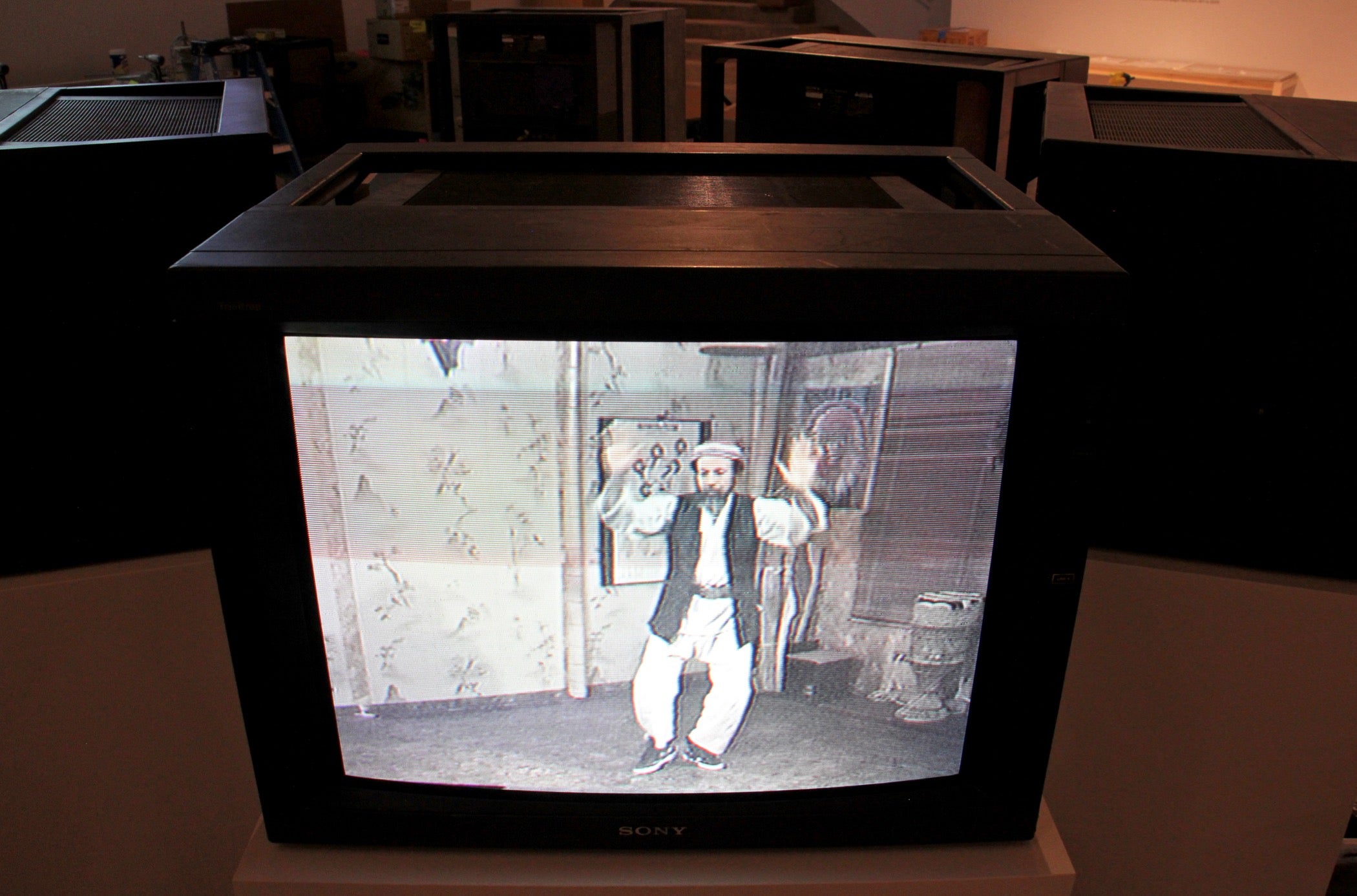
Graves is known in the music world as a groundbreaking free jazz drummer. While Milford Graves: A Mind-Body Deal gives an overview of his musical career, it also presents the wide range of interests that inform his creative practice.
It all starts with the heart.
For decades Graves has been recording heartbeats for study and manipulation. The opening room of the exhibition is wired with speakers playing back computerized tones based on heart recordings.
You will not hear the familiar rhythm normally associated with the heart’s beating muscle: thump-THUMP, thump-THUMP. Rather it is the computer generated sonification of electrical impulses that make the heart beat, creating a crackling, constantly shifting sonic landscape.
“It’s the micro-rhythms, how the heart sets itself between the pulses,” said ICA curator Anthony Elms. “This is how the heart is behaving between the beats.”
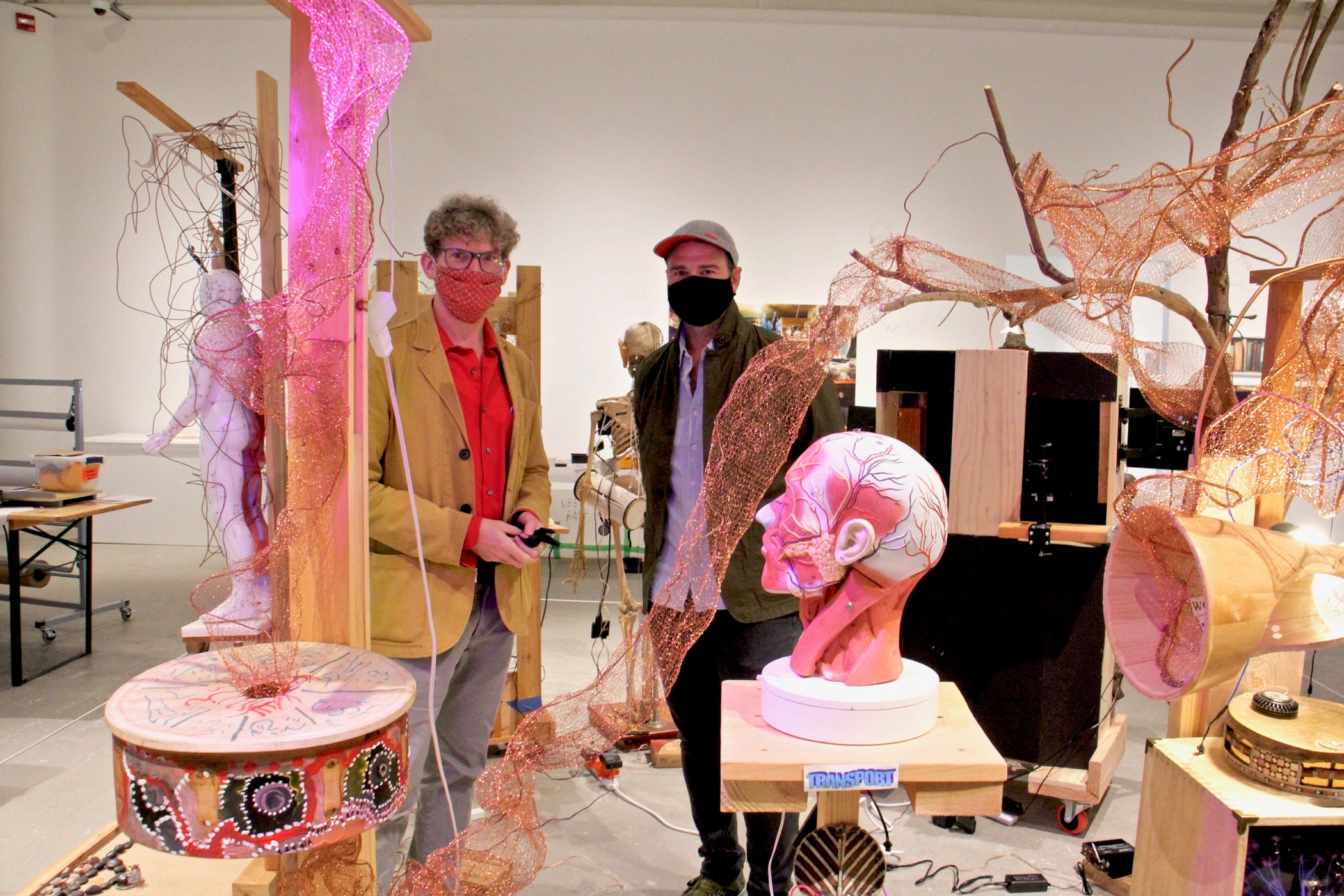
Graves is known as The Professor. In the 1960s, at the same time he became known as a visionary jazz drummer with Albert Ayler and Sun Ra, he earned an associate medical degree and ran a veterinarian lab in Manhattan. Later he was hired by Bennington College in Vermont for its music faculty, a job he held for 38 years.
He would go on to win a Guggenheim Fellowship in 2000, with which he bought laboratory equipment so he could continue his heartbeat research in the basement of his home in Jamaica, Queens. In 2017, Graves earned a patent for a process he co-invented that can repair stem cells using heartbeat vibrations.
All the while he also pursued personal investigations into the healing powers of herbs and martial arts, and made those scientific looking sculptures. The ICA exhibit features material ranging from hand-painted album covers he self-released in the 1960s, to sculptures Graves had been tinkering with just last week.
“He would still be working on this if I hadn’t picked it up from his house a few days ago,” said co-curator Mark Christman, founder of the new music presenting nonprofit Ars Nova Workshop. He was pointing to an assemblage of clocks, African traditional art, anatomical models, copper tubing, and two computer monitors displaying LabVIEW, a software used in laboratories that graphically organizes research data.
While the show spans more than 50 years, Elms said it’s not a retrospective because the show is neither comprehensive nor linear. It is organized broadly by the hard and soft sciences Graves has been investigating for most of his life.
Elms, who has his own “dirty past as a drummer,” said Graves’ drumming was informed by his other pursuits of science, holistic herb healing, martial arts and sculpture — and vice-versa.
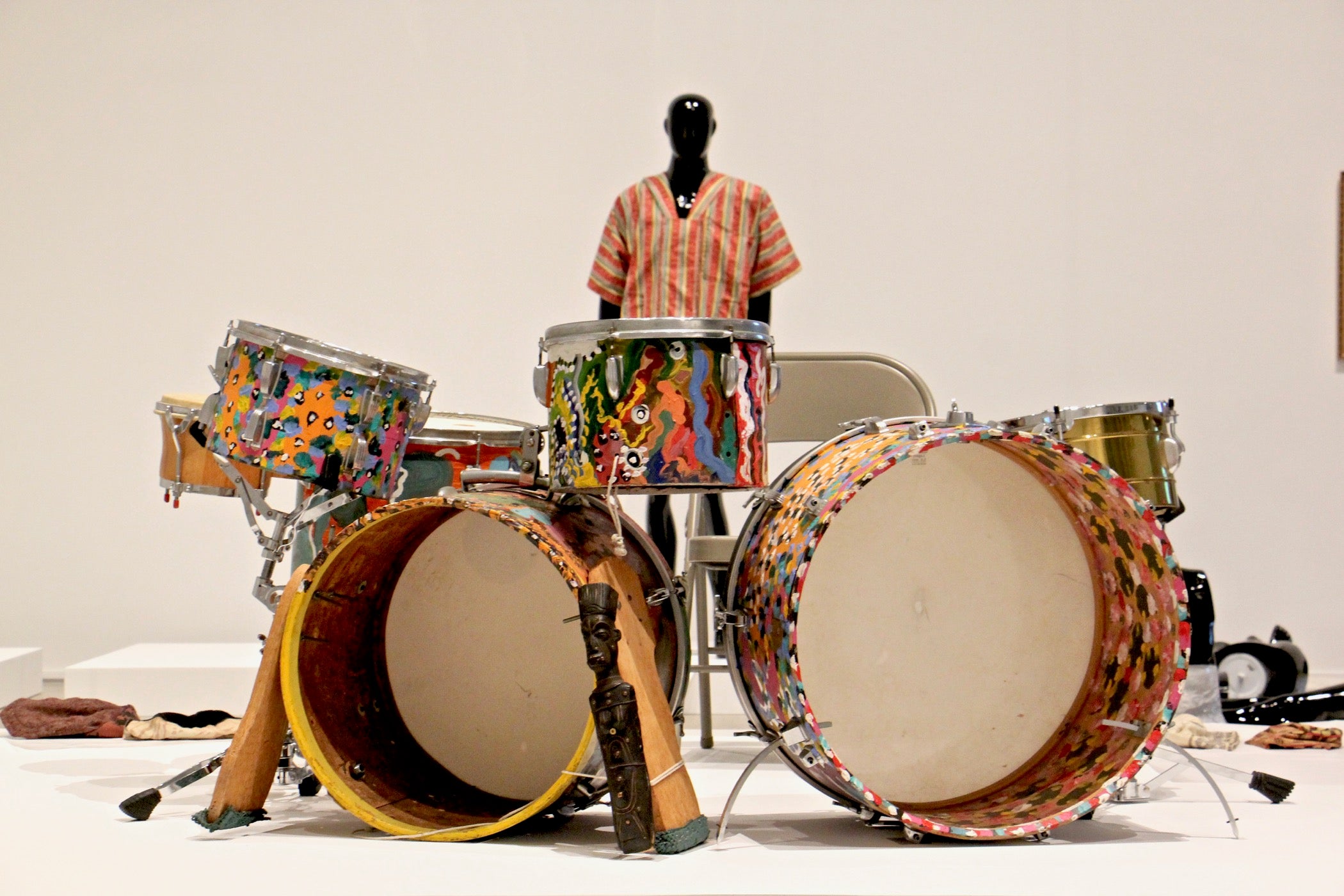
“There are no periods in Milford’s thinking. There are only commas or semicolons,” ICA curator Elms said. “There is an early interview in a jazz magazine where he says, ‘How can you be a master drummer if you don’t know anything about herbs?’”
The tragic irony of Milford Graves is that, after decades of researching the power of heartbeats, his own heart is dying. Two years ago, he was diagnosed with stiff heart syndrome (amyloid cardiomyopathy), a condition that causes the muscular walls of the heart to thicken with extra tissue, impeding the heart’s dexterity. It’s a similar degenerative process that Alzheimer’s disease does in the brain, but in the heart.
With the help of family and friends, Graves, 79, spends much of his time in a reclining chair monitoring his heartbeat and tapping rhythms on drums. According to a recent New York Times article, he uses drums to nudge his heart into healthier rhythms.
Is it working? Two years ago his doctors gave him six months to live.
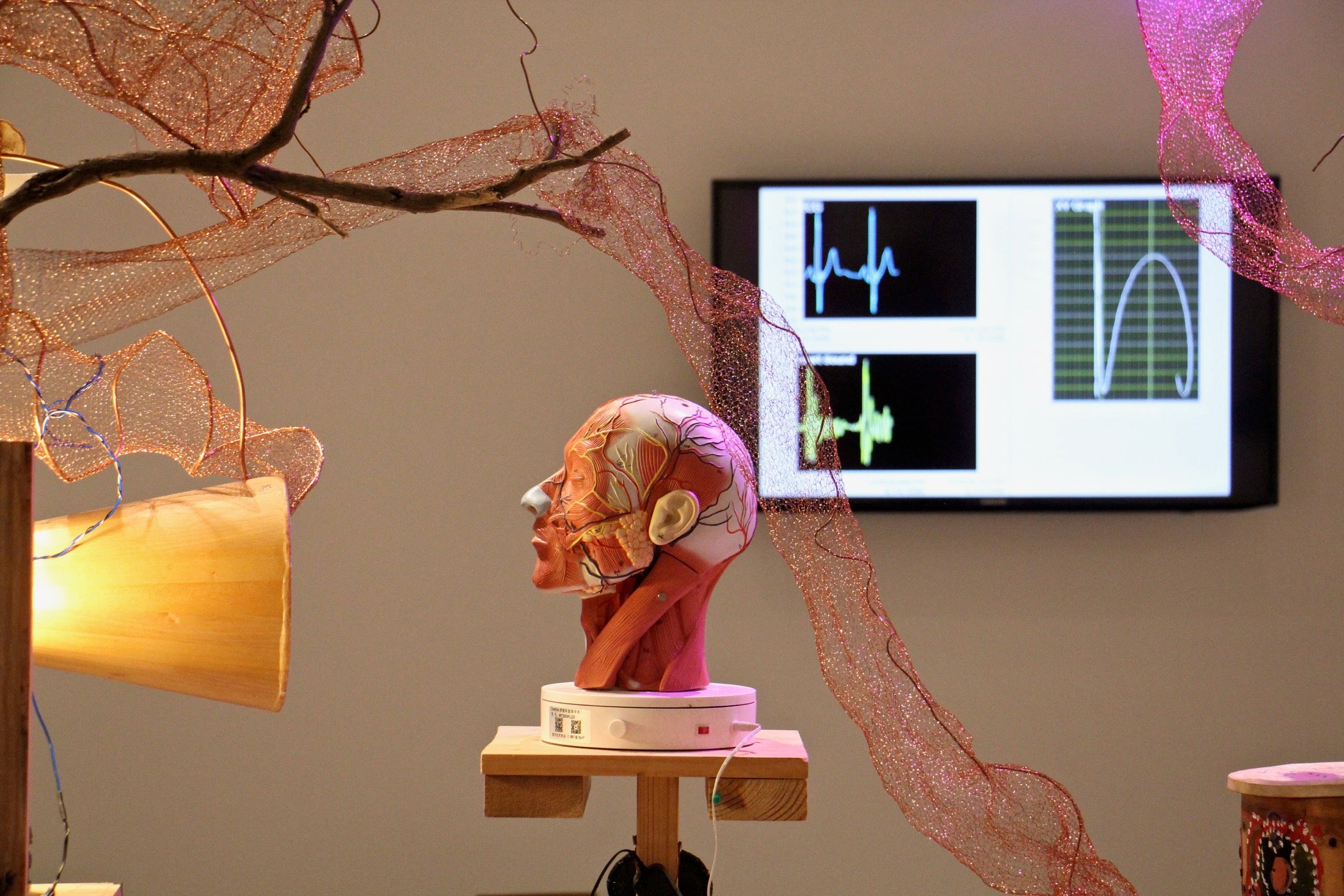
Christman, who, as a music presenter, has never before attempted a museum exhibit, said he got the idea for a Milford Graves show about five years ago – before Grave’s diagnosis – and ever since has been seeking gallery partners and funding. While The Mind-Body Deal features new work by Graves, it does not address his current health issues and how they relate to his lifelong body of research.
Nevertheless, it’s impossible not to think about it while viewing the show. Graves has spent a lifetime, both on stage and in the lab, searching for alternative rhythms inside the beats.
“He says a healthy heart dances,” said Christman. “The one that is rigid like a metronome is not.”
Milford Graves: The Mind-Body Deal runs through Jan. 24. Admission to the ICA is always free, but it’s imposing limits on the number of people allowed inside due to the threat of COVID-19 infection. Larger groups are not allowed, masks are required, and the galleries have been installed with walking routes to avoid patrons intermingling.
WHYY is your source for fact-based, in-depth journalism and information. As a nonprofit organization, we rely on financial support from readers like you. Please give today.





